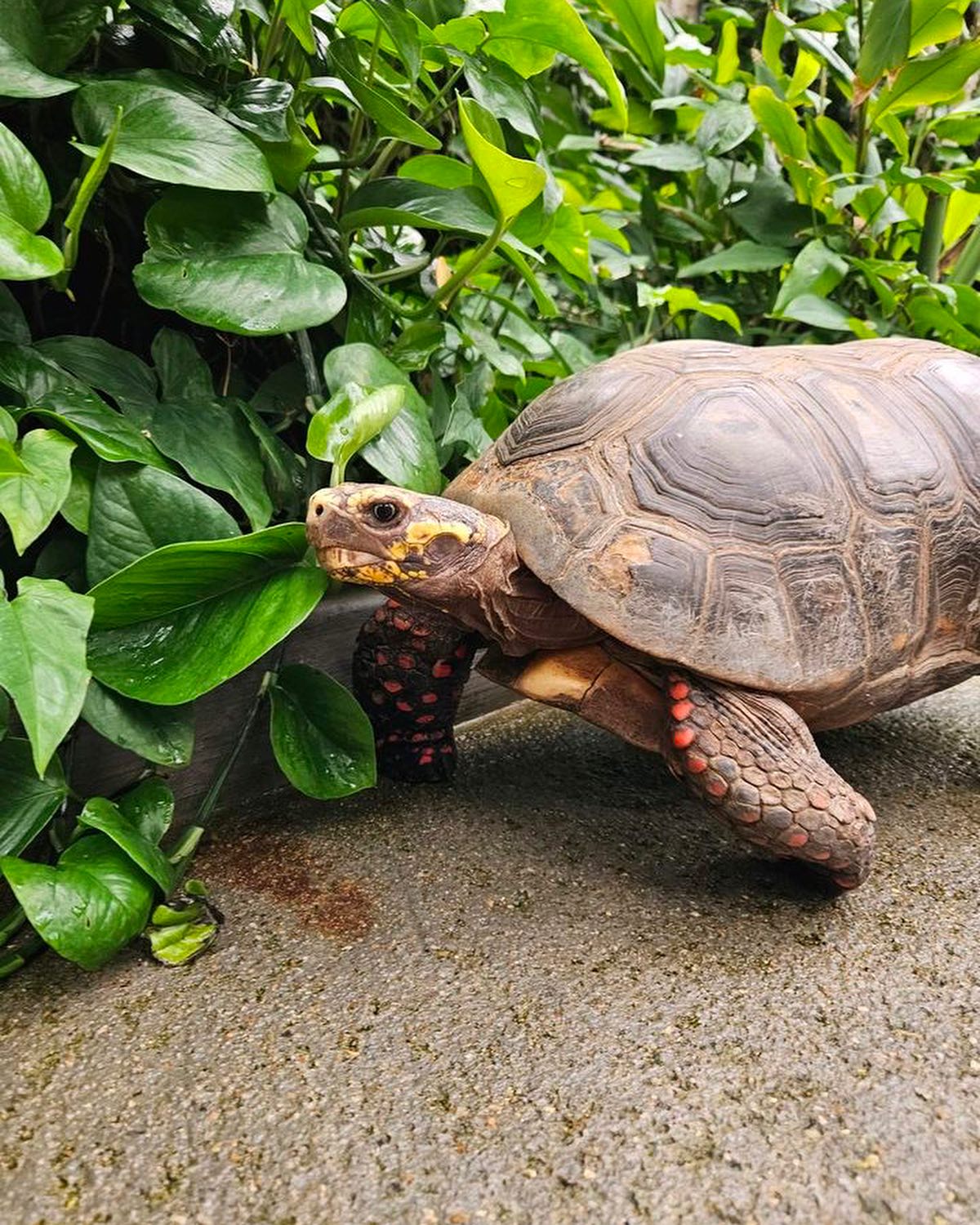- The significance of exercise and environmental enrichment for captive tortoises
- Behavioral ecology of the red-footed tortoise in natural habitats versus captivity
- The role of zoos in wildlife conservation and public education
- Methods and benefits of enrichment activities in zoos
- Bridging the gap between human interest and animal welfare
Red the red-footed tortoise’s adventures provide a rich case study into the intersection of zoology, management practices in modern zoos, and wildlife conservation efforts. His daily supervised walks with Keeper Amber allow him to not only stay physically active but also mentally engaged, which is both crucial and fascinating. Exercise is essential for captive animals, mirroring the complex challenges they might face in the wild. Regular movement assists in preventing health issues such as obesity and promotes psychological well-being by adding a layer of environmental enrichment.
Environmental enrichment is the practice of providing stimuli that encourage natural behaviors in animals. For a species like the red-footed tortoise, which typically resides in the tropical rainforests of South America, this means recreating aspects of their natural habitat to keep them mentally and physically stimulated. Such practices include providing spaces that encourage exploration and foraging, activities that are vital to a tortoise in the wild. These journeys through the Tropical Rainforest dome fulfill these needs. By allowing tortoises like Red to take their daily steps, we are effectively simulating the diverse range of physical activities they would engage in to find food, avoid predators, and interact with their environment in their native setting.
Zoos have a unique responsibility when it comes to wildlife conservation and education. They must balance the objectives of species preservation with the duties of public education. By showcasing Red’s daily walks, zoos can engage the public, demonstrating the importance of maintaining animal welfare while also promoting conservation. This practice educates visitors on how these creatures live in the wild and the efforts needed to care for them in captivity. It opens dialogues with zoo visitors about why conservation efforts are essential and how small activities can replicate a wild environment to keep animals like Red healthy and content.
Educational programs and initiatives are crafted around showcasing real-life interactions and behaviors. When visitors see Red exploring his environment, it creates a firsthand understanding of tortoise behavior that goes beyond static displays or informational placards. Interactive and immersive experiences in zoos help cultivate empathy and spark conservation interests. Awareness raised in this engaging manner can inspire future actions and support for wildlife conservation initiatives both locally and globally.
Enrichment strategies in zoos are not limited to physical exercise alone. They involve complex plans to mimic the sensory and cognitive challenges animals would face in their natural habitats. Keeper Amber’s role involves preparing various activities that stimulate Red’s foraging behavior, navigation skills, and problem-solving abilities. Whether it’s arranging his feeding around obstacles that require maneuvering or setting up scents that mimic potential food sources, these tasks aim to captivate and challenge Red’s natural instincts and intelligence.
Captive breeding and enrichment programs are critical components of conservation efforts. They maintain genetic diversity within captive populations and prepare individuals for possible reintroduction into the wild. These programs are vital because they help safeguard against species extinction due to habitat loss and other threats. Enrichment helps build resilient individuals who could thrive if reintroduced back into the wild.
Public interest in zoo activities, like Red’s walks with Keeper Amber, serves to bridge the gap between human admiration and animal welfare. By publicizing these activities, zoos can harness this interest to support broader conservation goals. When people witness firsthand the care and attention devoted to animals, they are often more likely to support conservation causes. The dual purpose of education and entertainment in zoos can turn into activism once visitors leave the zoo, understanding both the beauty and the plight of these animals.
Red’s supervised walks reinforce the significance of exercise and enrichment for the welfare of captive tortoises. Providing environments that mimic their natural habitats assists in maintaining their health and encourages natural behaviors crucial for overall well-being. Zoos play a vital role in fostering conservation awareness and sustaining viable populations of species threatened in the wild.
For Red, his walks are more than just exercise; they embody the essence of zoo enrichment programs that drive forward the mission of conservation and education. Each step Red takes is a step towards a more informed and concerned public, attuned to the needs of wild animals and the habitats they painstakingly mimic in these man-made enclosures. By focusing on compassion and environmental stewardship, we can all act as caretakers in our own capacities, ensuring a sustainable future for all species.
*****
Source Description
Don’t mind us, just getting our daily steps in! 🐢🥾
Red the red-footed tortoise got to explore the Tropical Rainforest dome with Keeper Amber on Sunday. These supervised walks help keep him active and living his best life!


